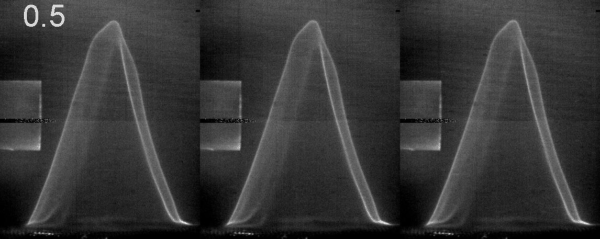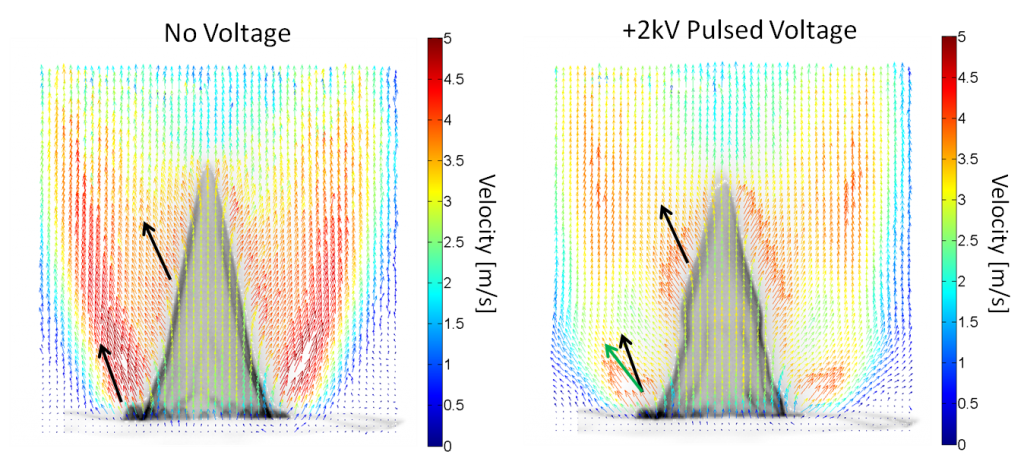Electric Fields
Electric fields can be used in a variety of combustion studies. They can be used to preferentially modify combustion by affecting the flow field fluidics. Electric fields do not consist of electrical ionization of the gas medium and therefore do not have sufficient energy to cause significant chemical kinetic modifications. Because of this their electrical consumption is significantly lower and can have a higher electrical efficiency in modifying fluidic flame structures.

One example of a electric field application can be seen in the temporal image sequence below. An anode is placed at the outer wall of a premixed flame and the electric field is pulsed at kHz rates to modify the combustion process. When the +2 kV pulsed, electric field is applied a low velocity region is generated near the middle of the flame. It also causes a lateral spread and an increase in velocity near the base of the flame. This appears like a ‘virtual’ bluff body in the middle of the flow. There are many advantages to producing this bluff body including increased flame stability.

Figure 1. kHz particle image velocimetry correlations showing the effect of the pulsed, electric field on the velocity fields. The pulsed electric field causes a lateral spreading near the base of the flame with a low velocity region just downstream of that, similar to that of a ‘virtual’ bluff body.
This modification of the combustion process causes shifts in the locations and thickness of the reaction zone. The behavior of this flame condition deviates significantly from standard laminar flame behavior and exhibits many turbulent characteristics. Intelligent implementation of the electric field can exploit the turbulence-like behavior and cause the thermal fields to shift towards the burner surface increasing traditional flammability limits.

Figure 2. Temporal plot of reaction zone thickness in response to the applied electric field showing an thickness increase of nearly 400% over a normal laminar flame thickness. Note how the reaction zone thickness changes closely matches applied voltage pulse duration.
Successful modification can lead to increased stability and increased combustion efficiency. More importantly, this can be accomplished by adding a very small fraction of energy to the combustion event compared to what the flame thermally produces; typically less than 1% of the flame’s thermal heat release. This would potentially enable applications in combustion control with strict energy requirements.
